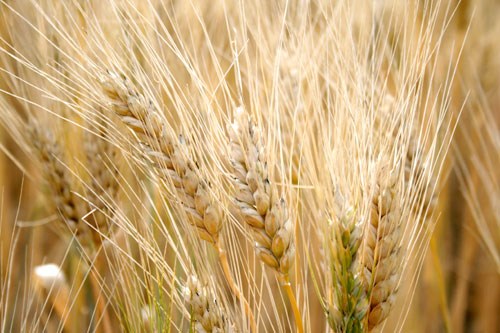The region has two per cent of the crop combined and over six per cent is swathed or ready to straight-cut, according to Saskatchewan Agricultures weekly crop report.
The region has two per cent of the crop combined and over six per cent is swathed or ready to straight-cut, according to Saskatchewan Agricultures weekly crop report. We will start swathing canola today, but we havent started combining which we probably wont start till the end of August, said Creelman area farmer Marcel VanStaveren.We grow three types of crops, which are flax, canola and durum. The durum wheat is still too immature to harvest and Im getting an airplane in to do desiccation on Monday, so I wont straight-cut until the end of August. Canola and durum will be combined the last day of August into September, but it will be October before the flax is ready.About 20 per cent of the winter wheat and fall rye, two per cent of the barley, 10 per cent of the lentils, nine per cent of the field peas and one per cent of the mustard have been combined. In addition, around 29 per cent of the winter wheat and fall rye, four per cent of the spring wheat, seven per cent of the durum, one per cent of the oats, three per cent of the barley, two per cent of the lentils and 17 per cent of the field peas are swathed or ready to straight-combine.Haying is proving difficult, with rain and high humidity slowing operations. Hay farmers Ive spoken to have informed me that they are getting 150 bales this year compared to the 100 last year, which is 30 to 50 percent more, explained VanStaveren. Hay quality has also been reduced in some areas due to rain on the swath. Baling hours are cut short due to humidity in the evening. In the region, 93 per cent of the hay is cut, 87 per cent of this has been baled or put into silage and six per cent is in the swath.The quality of hay crops are rated as seven per cent excellent, 73 per cent good and 13 per cent fair. Some producers are concerned that they may not get some hay fields cut. Estimated hay yields are as follows; dryland alfalfa and alfalfa/brome stands, 2.3 tons per acre; dryland greenfeed, 1.9 tons per acre.Weve received rain (in the past week) but it was just light, spotty showers, stated VanStaveren. According to the crop report, all areas received between six and 60 mm of rain during the week.The RM of Weyburn area received 34 mm, the RM of Brokenshell had 25 mm, the Radville area had 28 mm, Fillmore RM had 8 mm, and the Ceylon area 14 mm.Cropland topsoil moisture conditions are reported as 18 per cent surplus, 78 per cent adequate, three per cent short and one per cent very short. On hay land and pasture, topsoil moisture is rated as 10 per cent surplus, 83 per cent adequate, five per cent short and two per cent very short. In crop district 3ASW, 22 per cent of cropland is short of topsoil moisture.Crop damage is mostly attributed to hail, wind and flooding. There was light hail damage with five to 10 per cent damage. Most fields have received hail but it was light. There has been heavy hail in the area but we have been lucky, said VanStaveren.Frobisher, Lampman, Manor, Fillmore and Ceylon were among the communities that reported hail damage.Disease is also causing crop damage and the recent rain is causing some disease concerns in ripening pulse crops. Sprouting and bleaching in swathed cereals is also a concern. As well, some cattle producers are having issues with foot rot in cattle due to the wet conditions.Farmers are haying, getting ready for harvest and controlling weeds on unseeded acres. Over the past weeks, Ive been busy emptying bins and hauling grain to Weyburn and specialty yellow flax to Manitoba. Our new combines came in and we are preparing them along with the swathers, explained VanStaveren.Crop maturity has slowed due to cool and wet weather. Some warm weather is needed to push the crops along. Many areas are still one to two weeks behind normal in crop development.
